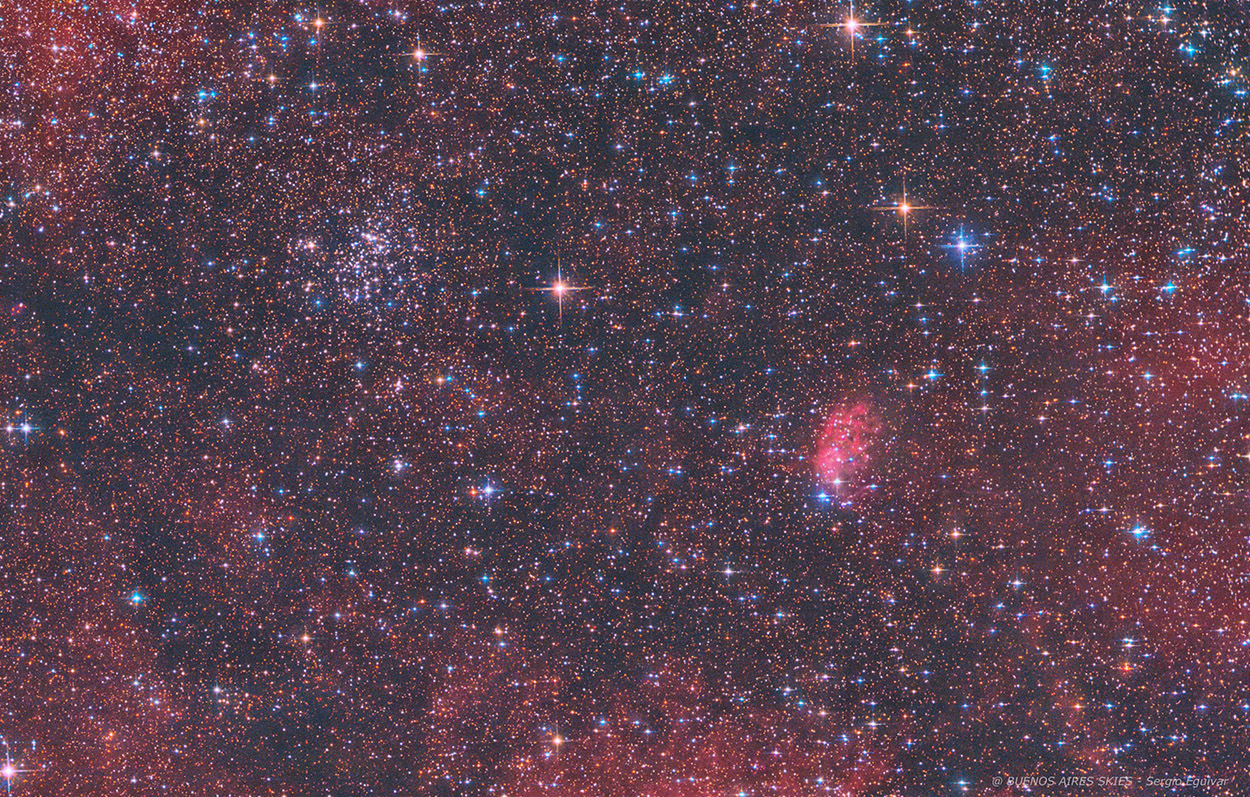
0222222222222222222222222222222222222222222222222222222.
| HOME |
NGC 6318 & RCW 121 (AKA SHARPLESS 2-4)
OPEN CLUSTER AND EMISSION NEBULA NEBULA IN SCORPIUS
(Image centered at: ra 17 h: 19 m / dec -39º 21')
CLICK THE IMAGE FOR A HIGH RESOLUTION VIEW
June 2025, Home Backyard in Martinez, Buenos Aires, Argentina
DATA
TYPE: Open Cluster and Emission Nebula
APPARENT SIZE: NGC 6318 5 arc minutes; RCW 121 4 arc minutes
APPARENT MAGNITUDE (V): NGC 6318 12; RCW 121 NA
DISTANCE: NGC 6318 2,700 light years RCW 121 2700 parsecs or 8,800 light years
IMAGE INFORMATION
INSTRUMENT: 6" ORION OPTICS UK (Ultra Grade Optics) w/Sky Watcher Coma Corrector (0.9x) working at at f4.5
CAMERA: QHY 183 MONO
MOUNT: SKY WATCHER NEQ6, OAG QHY 5II
FILTERS: OPTOLONG LRGB Set + Antlia Ha 3 nm
SKY CONDITIONS: urban skies - Bortle 8
EXPOSURES: LHARGB (45,90,45,45,45)
OBJECT DESCRIPTION AND IMAGE SESSION
The above image shows two objects in the constellation of Scorpius which in fact are not related. In the upper center we have Open Cluster NGC 6318. This cluster is very young between 3 to 30 Million years old. It contains 244 members below magnitude 19.
To the center right we have RCW 121 also known as Sharpless 2-4. This emission nebula is a Molecular Cloud that host stars in a formation stage. Molecular clouds can extend tens or even hundreds of light-years, and their masses can reach thousands or even hundreds of thousands of solar masses. Within these molecular clouds, there are regions where gravitational instabilities occur, leading to the formation of clumps or smaller condensations, where the density is greater than the surrounding environment. Under certain conditions, the pressures and temperatures reached by these clumps become so high that nuclear reactions eventually occur within them, giving rise to new generations of stars. This appears to have been the case with the optical nebulae RCW 121. These star-forming regions, located in the direction of the galactic center, host a large number of very hot, high-mass stars that ionize gas in the original molecular cloud.
RCW 121 came a bit saturated for the Ha spectrum. There are not many RGB images with this FOV available in the web. A more interesting FOV to image could be RCW 121 with RCW 122 which is also a molecular cloud which was not framed here.